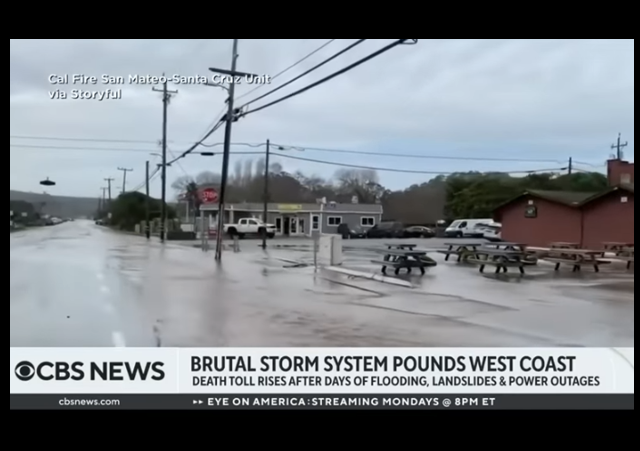Why California Wasn’t Prepared for Floods from Massive Storms

California is experiencing massive storms that have caused widespread flooding, evacuations, power outages, and, unfortunately, death.
At least 17 people have died and one child remains missing after parts of California were hit by severe storms that caused flash flooding and felled trees, as the National Weather Service warned the inclement weather is expected to persist over the next few days.The situation is expected to remain dire for the next several days, with the National Weather Service warning that “no significant letup” is expected soon as heavy rains move to Southern California on Tuesday. The heavy rainfall raises the threat of flash flooding and mudslides across various parts of the state, including Los Angeles and San Diego.The agency also noted that the risk will be higher in regions scarred by earlier forest fires due to these regions having less vegetation. While parts of northern and central California will see some respite, this is expected to be short lived as they face “a never ending parade of strong wet Pacific systems,” the agency added.
It turns out that California’s bureaucrats bought hook-line-and-sinker into the “climate crisis” narrative. So, they failed to budget for the cyclic flooding that is known to occur in this state.
The state government has historically spent more on fire and earthquake safety. But a current deluge of rainfall makes it clear that planning for disasters needs to be broader and more proactive.Flooding along the state’s coast is expected to cost California more than $1 billion, the Los Angeles Times reported Tuesday. Governor Gavin Newsom already added $202 million for flood investments to his latest budget proposal. But that cash was badly needed years ago. While the California Senate called for extra flood protection in May, the budget only set aside $246 million for risk prevention.Municipal spending was painfully low with state and local authorities spending $48 million annually. The government estimated in November that between $88 million and $108 million is needed. That figure also pales in comparison to spending on other disasters. Fire protection funding grew from $800 million in 2006 to $3.7 billion in 2022. The state’s last budget teed up $250 million for earthquake-proofing.
Climate nonsense meant fewer funds for flood-control measures, and “experts” wanted to do away with dams and have a more “natural” approach to flood prevention.
“We have to let our rivers flow differently, and let the rivers flood a little more and recharge our groundwater in wet seasons,” Peter Gleick, a climate scientist and co-founder of the Pacific Institute in Oakland, told CNN. “Instead of thinking we can control all floods, we have to learn to live with them.”Levees have effectively protected communities in the past, Gleick said, but they’re not designed for the climate-change challenges of today.“We need new thinking, we need to operate that infrastructure differently, we need to change some of the characteristics of that infrastructure,” Gleick said. “That will allow us to capture more of these flood flows, store it underground in these aquifers, and then use those ground water resources when we need them in dry years.”Many climate experts agree – using levees to prevent floods during the wet season means less water is available to seep into underground aquifers. Those aquifers are a vital source of water for drinking, bathing and agriculture across California’s Central Valley, and they are running dry.
The good news is that the state’s reservoirs are refilling after two weeks of rain. Hopefully, the flowers will be many this spring and the environmental nuts few.
CLICK HERE FOR FULL VERSION OF THIS STORY